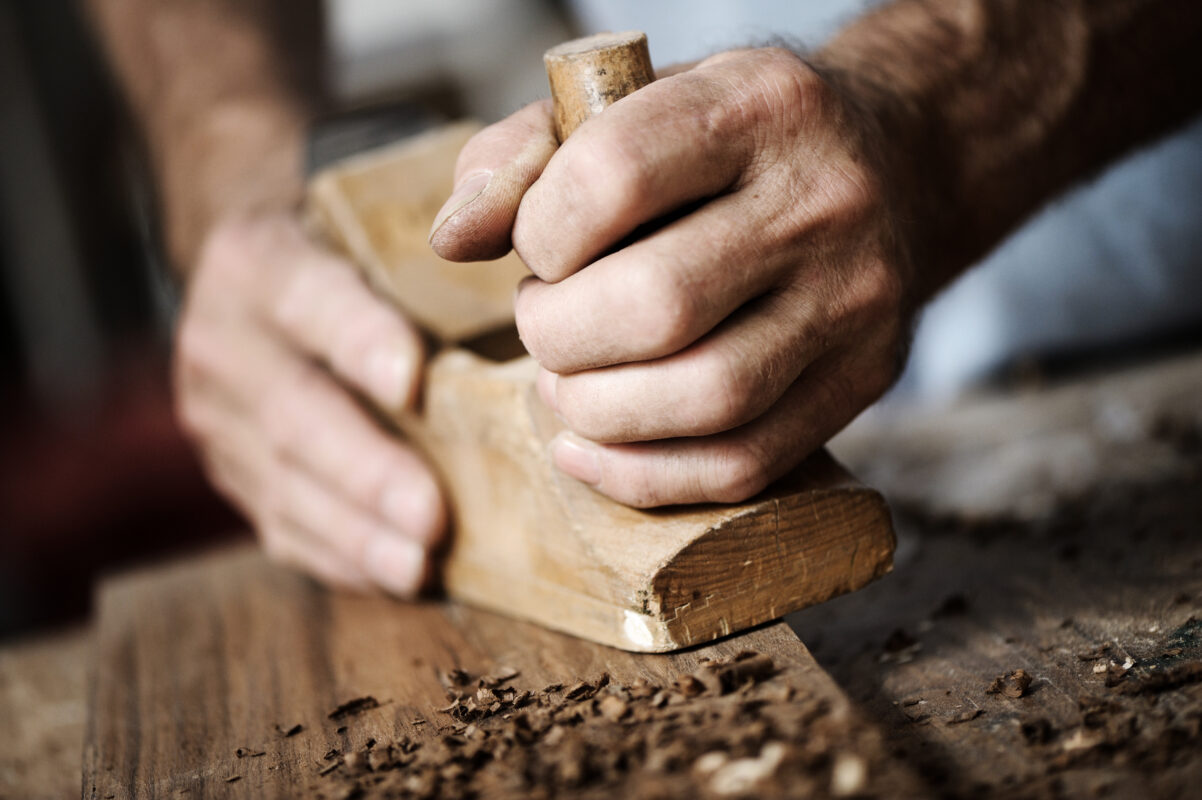
What is hand arthritis?
Hand arthritis, also known as osteoarthritis of the hand, is a degenerative condition that affects the joints in the hand. It occurs when the cartilage, which provides a cushioning layer between the bones, gradually wears down over time. As the cartilage diminishes, the bones in the hand may rub against each other, leading to pain, stiffness, and reduced mobility. Hand arthritis can affect various parts of the hand, including the fingers, thumb, and wrist. It is a common condition, particularly in older individuals, but it can also occur due to factors like genetics, joint injuries, or inflammatory conditions. While hand arthritis is typically a chronic condition, there are various treatments available to manage symptoms and improve hand function.
The different types of hand arthritis:
- Osteoarthritis often referred to as “wear and tear” arthritis, is a degenerative joint disorder characterized by the gradual breakdown of cartilage in the joints. Cartilage serves as a protective cushion between bones, and as it wears away, it leads to friction and pain during movement.
- Rheumatoid arthritis in the hands is an autoimmune disease that causes the body’s immune system to attack the joints, leading to inflammation and damage. The exact cause of rheumatoid arthritis is unknown, but it is thought to be a combination of genetic and environmental factors.
- Psoriatic arthritis is a chronic autoimmune condition characterized by joint inflammation and skin symptoms, often occurring in individuals with psoriasis, a skin disorder. It causes pain, stiffness, and swelling in the joints, which can lead to reduced mobility and, if left untreated, joint damage. Psoriatic arthritis can affect various joints in the body, including the fingers, toes, spine, and large joints like the knees and hips.
Causes of Arthritis in the Hands
There are several potential causes and risk factors for hand arthritis:
- Aging: The most common cause of hand arthritis is simply getting older. As we age, the cartilage in our joints naturally wears down, leading to arthritis.
- Genetics: Some people may be genetically predisposed to developing arthritis. If your parents or grandparents had hand arthritis, you may have a higher risk.
- Joint Overuse or Injury: Previous injuries to the hand, such as fractures or dislocations, can increase the likelihood of developing arthritis in the affected joints. Repetitive use of the hand in activities like typing, knitting, or sports can also contribute to the development of arthritis.
- Joint Misalignment: Conditions like malalignment of the joints (for example, if the bones don’t align properly) can put extra stress on certain areas, leading to the breakdown of cartilage.
- Inflammatory Arthritis: Conditions like rheumatoid arthritis or psoriatic arthritis can cause inflammation in the joints, which can lead to the destruction of cartilage over time.
- Metabolic Disorders: Certain metabolic disorders, like hemochromatosis (a condition where the body absorbs and stores too much iron), can lead to the development of arthritis.
- Other Medical Conditions: Conditions like gout, which leads to the accumulation of uric acid crystals in the joints, can also cause arthritis in the hand.
It’s important to note that while these factors can contribute to the development of hand arthritis, the specific cause can vary from person to person. Additionally, some individuals may develop hand arthritis without an easily identifiable cause. If you suspect you have hand arthritis or are experiencing symptoms, it’s important to consult a healthcare professional for an accurate diagnosis and appropriate treatment plan.
Parts of the hand that are affected by arthritis
Arthritis can affect various parts of the hand, leading to pain, stiffness, and reduced mobility. The specific areas commonly affected include:
- Finger Joints (DIP, PIP): Arthritis often occurs in the distal interphalangeal (DIP) joints, which are at the tips of the fingers, as well as the proximal interphalangeal (PIP) joints, which are in the middle of the fingers.
- Thumb Base (CMC Joint): The carpometacarpal (CMC) joint at the base of the thumb, also known as the basal joint, is a common site for arthritis, particularly in cases of basal joint arthritis.
- Metacarpophalangeal (MCP) Joints: These are the joints at the base of each finger, where the fingers meet the palm.
- Knuckles (MCP, PIP): The metacarpophalangeal (MCP) and proximal interphalangeal (PIP) joints at the knuckles are commonly affected by arthritis.
- Wrist: While not technically part of the hand, arthritis can also affect the wrist joint, which can have a significant impact on hand function.
In the video provided below, Dr. Christopher Healy, a specialist in hand and upper extremity conditions, addresses thumb arthritis, covering common symptoms, causes, and available treatment options.
Symptoms of Arthritis in the Hands
The symptoms of arthritis in hands can vary depending on the type and severity of the condition and may progress over time. Common symptoms include:
- Pain: Persistent or intermittent pain in the hand joints, which may worsen with use or over time.
- Stiffness: Difficulty in moving the affected fingers or thumb, especially in the morning or after periods of inactivity.
- Swelling: Noticeable swelling or enlargement of the joints.
- Reduced Range of Motion: Difficulty in performing fine motor tasks, like buttoning a shirt or gripping objects firmly.
- Weakness: Weakening of the hand muscles, making tasks that require strength more challenging.
- Tenderness: Sensitivity or discomfort when pressure is applied to the affected joints.
- Joint Deformities: In advanced cases, the joints may become misaligned or deformed.
- Crepitus: A grinding or grating sensation or sound in the affected joints during movement.
- Warmth: The affected joints may feel warm to the touch due to inflammation.
Diagnosis of Arthritis in the Hands
Diagnosing hand arthritis involves a thorough assessment combining medical history, physical examination, and diagnostic tests. Beginning with a detailed inquiry into your medical background, including any family history of arthritis or relevant conditions, healthcare providers conduct a comprehensive physical evaluation, checking for signs like joint swelling, tenderness, warmth, and range of motion limitations. X-ray imaging of the hands and wrists is typically employed to identify structural changes like joint space narrowing or bone spurs. While no single blood test definitively diagnoses hand arthritis, specific tests can help differentiate it from other types of arthritis. Blood tests may also be ordered to rule out other conditions that can mimic arthritis, such as gout or lupus.
If hand arthritis is suspected, seeking prompt evaluation from a healthcare provider is crucial for accurate diagnosis and timely intervention.
Treatment of Arthritis in the Hands
There is no cure for hand arthritis, but there are many treatment options that can help manage symptoms and improve quality of life. Treatment for arthritis in hands may include:
- Medications: In cases of inflammatory arthritis like rheumatoid arthritis or psoriatic arthritis, Nonsteroidal anti-inflammatory drugs (NSAIDs) are often used to alleviate joint pain and reduce inflammation.
- Injections: Corticosteroids directly into the affected joints can provide effective short-term relief from pain and inflammation.
- Physical and Occupational Therapy: These therapies focus on exercises and techniques to improve hand strength, range of motion, and function. Additionally, occupational therapy can provide valuable strategies for adapting daily activities to minimize stress on the joints.
- Splints and Supports: Customized splints or braces can provide support to affected joints, reducing strain and promoting more comfortable hand movement.
- Surgery: In severe cases, where joint damage is extensive, surgery may be necessary to restore function and reduce pain.
Managing hand arthritis:
- Hot and cold packs are valuable tools for managing hand arthritis pain. It’s crucial to use caution and not apply extreme temperatures directly to the skin to avoid burns or damage. Tailoring the use of hot and cold packs to your comfort and needs can be a valuable addition to your hand arthritis pain management routine.
- Applying a hot pack, like a warm towel or heating pad wrapped in cloth, for 15-20 minutes can increase blood flow, relax muscles, and alleviate stiffness. This is particularly effective in the morning or before activities to combat morning stiffness.
- On the other hand, cold packs, wrapped in a towel, can be applied for 10-15 minutes to reduce inflammation and provide immediate pain relief, making them ideal after activities or during flare-ups with increased swelling.
- Lifestyle Modifications: Use ergonomic tools and aids to minimize stress on the joints during daily activities. Pacing activities and taking regular breaks can also prevent overuse of the hand joints.
- Diet and Exercise: Maintain a balanced diet rich in anti-inflammatory foods like fruits, vegetables, and omega-3 fatty acids. Engage in regular, low-impact exercises to improve overall joint health.
Prevention of Arthritis in the Hands
There is no guaranteed way to prevent arthritis in the hands, but there are some lifestyle changes that may help reduce the risk or delay the onset of the condition. These include:
- Engaging in regular exercise to keep the joints flexible and strong.
- Eating a healthy diet that is rich in fruits, vegetables, and whole grains.
- Protecting the hands from injury or overuse.
Hand arthritis is a chronic condition that can have a significant impact on a person’s quality of life. While there is no cure for arthritis in the hands, there are many treatment options that can help manage symptoms and improve function. By working with one of The Center’s hand and upper extremity specialists, and making lifestyle changes, people with arthritis of the hand can continue to lead active and fulfilling lives.
Stay informed about upcoming webinars and events, and gain valuable insights on leading a healthy, pain-free life from our experts by subscribing to our monthly newsletter. Click the button below to join!





